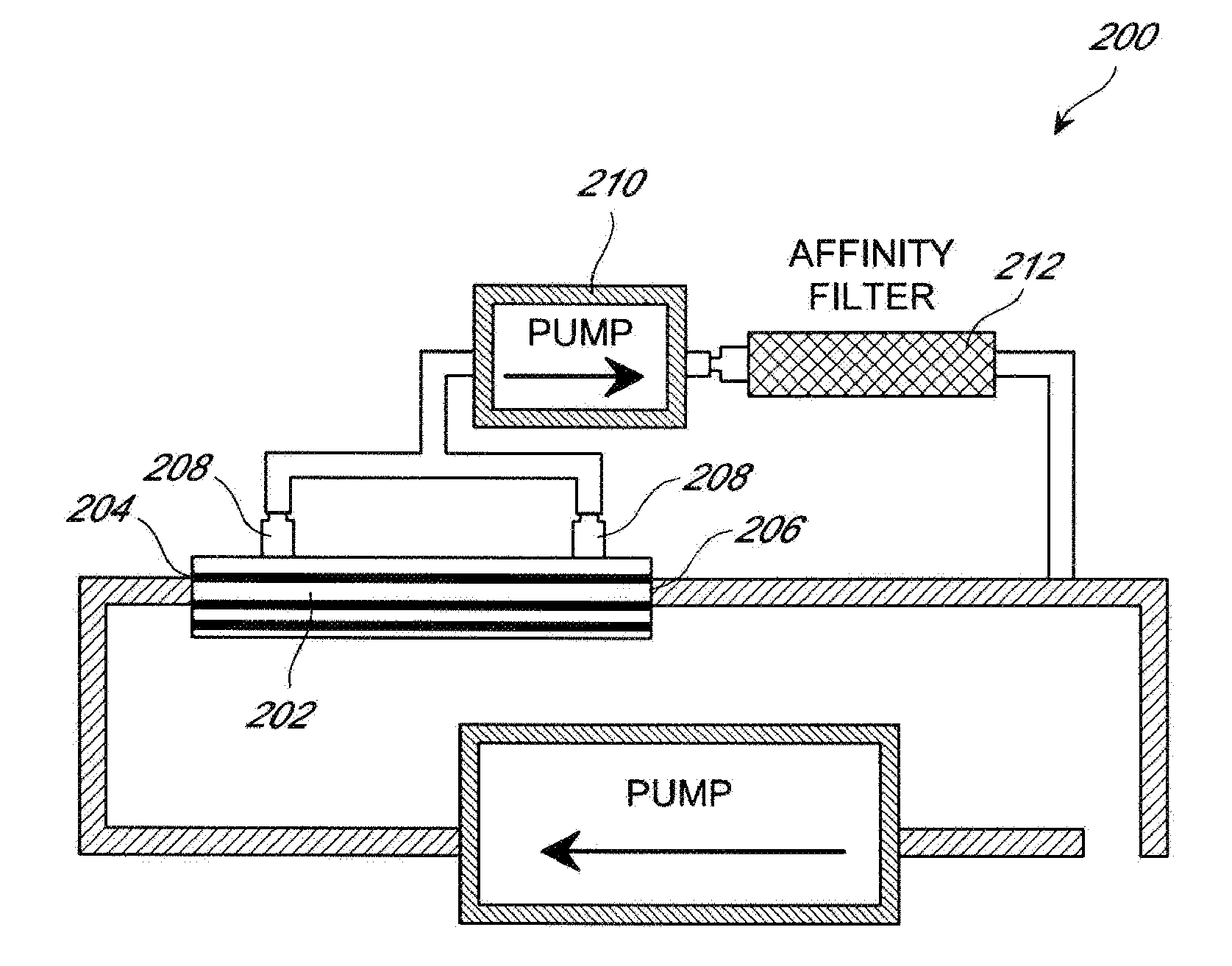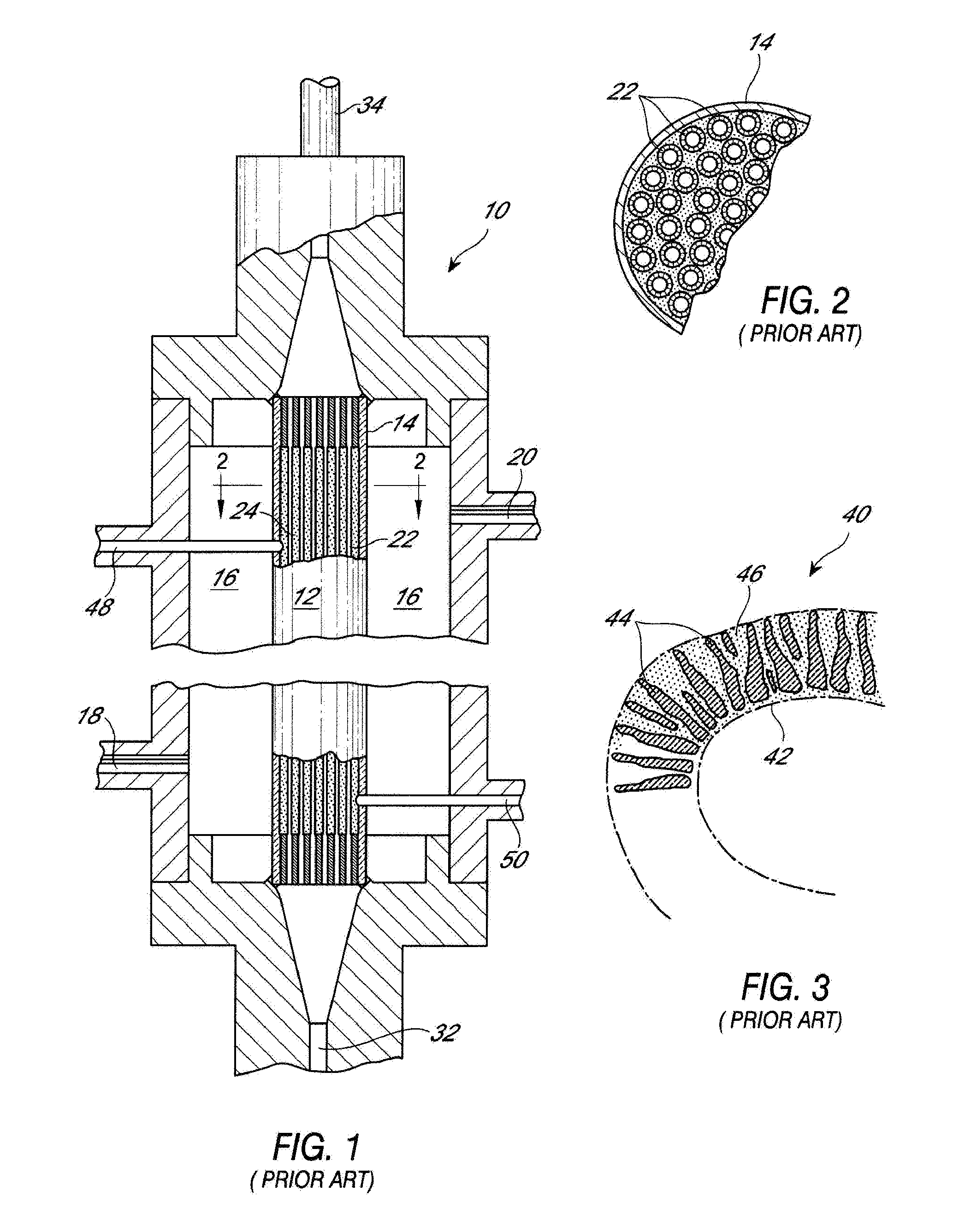Enhanced antiviral therapy methods and devices
a technology of antiviral therapy and enhanced antiviral therapy, which is applied in the field of enhanced antiviral therapy methods, devices and kits for treating viral infections, can solve the problems of limiting the effectiveness of therapy, increasing the likelihood of viral infections, and difficulty in undergoing viral disease therapy, so as to enhance the efficacy of antiviral therapy, enhance the effect of antiviral therapy, and enhance the antiviral therapy.
- Summary
- Abstract
- Description
- Claims
- Application Information
AI Technical Summary
Benefits of technology
Problems solved by technology
Method used
Image
Examples
example 1
[0129]A patient suffering from HCV infection is identified. A lectin affinity hemodialysis treatment is administered to the patient for 8 hours a day, 3 times a week for a week prior to administering the patient a course of interferon and ribavinrin (IFN / RIB) combination therapy. During the hemodialysis treatment, the inlet port of a lectin affinity hemodialysis device is linked intravenously to the patient to allow blood to flow from the patient to the device, optionally with the assistance of a pump. Blood is collected from a peripheral vein of the patient to pass through the lectin affinity hemodialysis device. The outlet of the lectin affinity hemodialysis device is also linked intravenously to the patient to allow the effluent blood to be reinfused into the patient.
[0130]After the completion of the one-week hemodialysis treatment, a course of the IFN / RIB combination therapy is administered to the patient for 24 weeks. During the courses of hemodialysis and IFN / RIB treatment, th...
example 2
[0132]A patient suffering from HCV infection is identified. A lectin affinity hemodialysis treatment is administered to the patient for 8 hours a day, 3 times a week for 12 weeks. During the hemodialysis treatment, the inlet port of a lectin affinity hemodialysis device is linked intravenously to the patient to allow blood to flow from the patient to the device, optionally with the assistance of a pump. Blood is collected from a peripheral vein of the patient to pass through the lectin affinity hemodialysis device. The outlet of the lectin affinity hemodialysis device is also linked intravenously to the patient to allow the effluent blood to be reinfused into the patient.
[0133]After one week of the lectin affinity hemodialysis treatment, a course of the IFN / RIB combination therapy is administered to the patient for 24 weeks. During the courses of hemodialysis and IFN / RIB treatment, the viral load is monitored by quantifying HCV-RNA using the original Amplicore HCV monitor method at ...
example 3
[0135]A patient suffering from HCV infection is identified. A lectin affinity hemodialysis treatment is administered to the patient for 8 hours a day, 3 times a week for 24 weeks. During the hemodialysis treatment, the inlet port of a lectin affinity hemodialysis device is linked intravenously to the patient to allow blood to flow from the patient to the device, optionally with the assistance of a pump. Blood is collected from a peripheral vein of the patient to pass through the lectin affinity hemodialysis device. The outlet of the lectin affinity hemodialysis device is also linked intravenously to the patient to allow the effluent blood to be reinfused into the patient.
[0136]From the same day on which the lectin affinity hemodialysis treatment starts, a course of the IFN / RIB therapy is administered to the patient for 24 weeks. During the courses of hemodialysis and IFN / RIB treatment, the viral load is monitored by quantifying HCV-RNA using the original Amplicore HCV monitor method...
PUM
 Login to View More
Login to View More Abstract
Description
Claims
Application Information
 Login to View More
Login to View More - R&D
- Intellectual Property
- Life Sciences
- Materials
- Tech Scout
- Unparalleled Data Quality
- Higher Quality Content
- 60% Fewer Hallucinations
Browse by: Latest US Patents, China's latest patents, Technical Efficacy Thesaurus, Application Domain, Technology Topic, Popular Technical Reports.
© 2025 PatSnap. All rights reserved.Legal|Privacy policy|Modern Slavery Act Transparency Statement|Sitemap|About US| Contact US: help@patsnap.com



